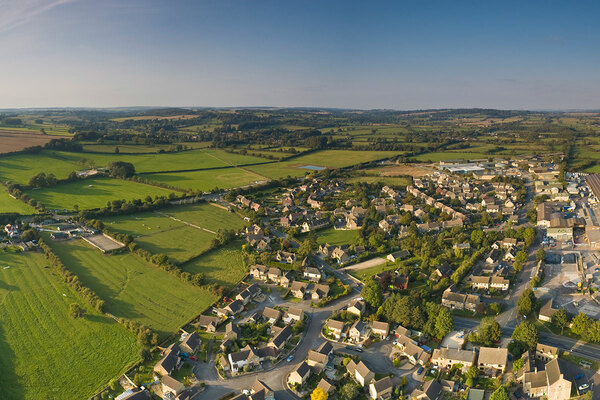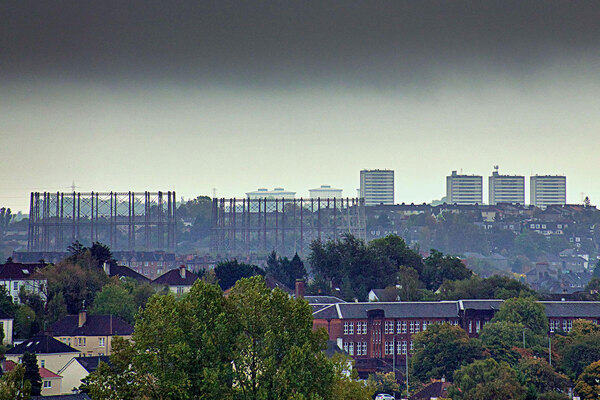 Jules Birch
Jules BirchDecarbonisation cannot be achieved without massive improvements to housing stock
We need a new mindset on decarbonisation, writes Jules Birch
Decarbonisation is set to be one of the biggest housing issues of the next decade but the debate about how to do it and how to pay for it is only just getting started.
If the need for dramatic action has long been clear, so too has a tendency to put off doing anything meaningful – witness the way that England’s ambition to make all new homes zero carbon by 2016 was watered down and then dropped by the self-styled “greenest government ever”.
But as extreme weather and Extinction Rebellion bring the climate emergency to the top of the agenda the issue is back with a vengeance.
In February the UK Committee on Climate Change warned that “UK homes are not fit for the future” and made a series of recommendations including no new homes to be connected to the gas grid from 2025.
“It very much remains to be seen how seriously Boris Johnson’s government will take the net zero carbon emissions target”
In March the Spring Statement revealed plans for a Future Homes Standard that will ban fossil fuel heating in new build homes by 2025.
And in June, Theresa May’s government proposed a legal commitment to reach net zero carbon emissions by 2050.
It very much remains to be seen how seriously Boris Johnson’s government will take that target – especially when it comes to existing homes – but it cannot be achieved without massive improvements in the energy efficiency and sustainability of our housing stock.
The implications of all that for social landlords, private landlords, tenants, homeowners and wider communities are only just becoming apparent, but the clearest picture that I’ve yet seen of how the future might look was published in Wales last month.
The Welsh government has made its own commitment on reaching net zero emissions by 2050 and the Independent Review on Decarbonising Welsh Homes sets out how to get there in housing.
To put things in perspective, the 1.4 million homes in Wales are responsible for 27% of all energy consumed and 15% of all demand-side greenhouse gas (GHG) emissions.
The condition of the existing stock in Wales, with many older homes low in energy efficiency, and high levels of fuel poverty pose particular challenges.
However, the review rules out a programme of large-scale demolition and replacement on the grounds that it would increase GHG emissions, because of the carbon embedded in building materials, and lead to the dispersal of established communities.
Achieving zero carbon by 2050 will mean increasing the energy efficiency of homes from the current average of Energy Performance Certificate (EPC) Band D to the EPC Band A level that only a tiny proportion meet now.
The review recommends that all new homes in Wales should be built to EPC A standards by 2025 and all new affordable homes by 2021 – and both should also be water efficient and climate resilient.
If that sounds like a tough ask, then it makes no sense to build new homes that will have to be retrofitted later on.
It’s the scale of the retrofit programme required for existing homes that is really mind-boggling – but also full of potential to do things differently.
The review accepts that not all older homes will be able to achieve EPC A but sets out a plan that starts bringing homes in social ownership and homes in fuel poverty (a total of 300,000) up to the standard by 2030.
The mind-boggling bit is costs estimated at between £500m and £1bn a year for those homes at 30,000 a year over the next 10 years. That’s just for Wales – the equivalent for England would probably be well over £10bn a year.
Some of this could be met from existing energy efficiency and improvement budgets like the Welsh Housing Quality Standard and it’s also possible that delivering the technology at scale will cut costs as the programme continues.
“The mind-boggling bit is costs estimated at between £500m and £1bn a year for those homes at 30,000 a year over the next 10 years”
However, anything like those sort of figures will still mean inevitable choices to be made about the balance of funding between investment in desperately needed new social homes and improvements to existing ones.
Factor in a temptation for social landlords to demolish their worst stock to meet their targets and that problem will be compounded.
However, the climate emergency means that the cost of not doing anything could eventually dwarf the cost of acting now.
Much of the cost would be offset by the higher tax receipts and lower benefit payments generated by all that retrofit work and by the health benefits of warmer homes – and the Treasury could help after Brexit by eliminating VAT on it.
The potential is of a major investment programme that, unlike big infrastructure projects like HS2, reaches into every community in the country.
Whether you call it a Green New Deal or a way to bring the country back together after Brexit, the programme could be a major source of well-paid new jobs and a way to support small and medium-sized builders and (importantly in Wales) the development of the foundational economy.
“Perhaps the biggest challenge is the need for a new mindset”
And social landlords would be the pioneers in all of it, able to play a key role as anchor institutions in their communities as a proven programme is extended to privately owned homes in the 20 years after 2030.
But the list of things required to make it all work includes training, quality control and innovations in green finance as well as cash.
One major issue will be the state of the construction industry. As things stand, even if a bonanza for cowboy builders can be avoided, there is still a performance gap between the standards that builders are meant to be meeting and what they actually deliver in what they build.
As we already know from the cladding scandal, that will mean major reform of building control and a way of measuring retrofit as delivered and not as predicted.
Perhaps the biggest challenge is the need for a new mindset, especially for the politicians who will have to commit to this amid the uncertainty of Brexit. Welsh government ministers have promised a response to the review in the autumn.
I interviewed Chris Jofeh, the building retrofit leader at Arup who chaired the review, at the launch and he put it this way: “The cost analogy is that in 1940 Mr Churchill did not say we will fight them on the beaches within the constraints of the recent defence budget. Climate change is an existential threat and it requires exceptional measures. Don’t expect you can do it with existing budgetary constraints. It needs a new paradigm.”
Jules Birch, award-winning blogger












